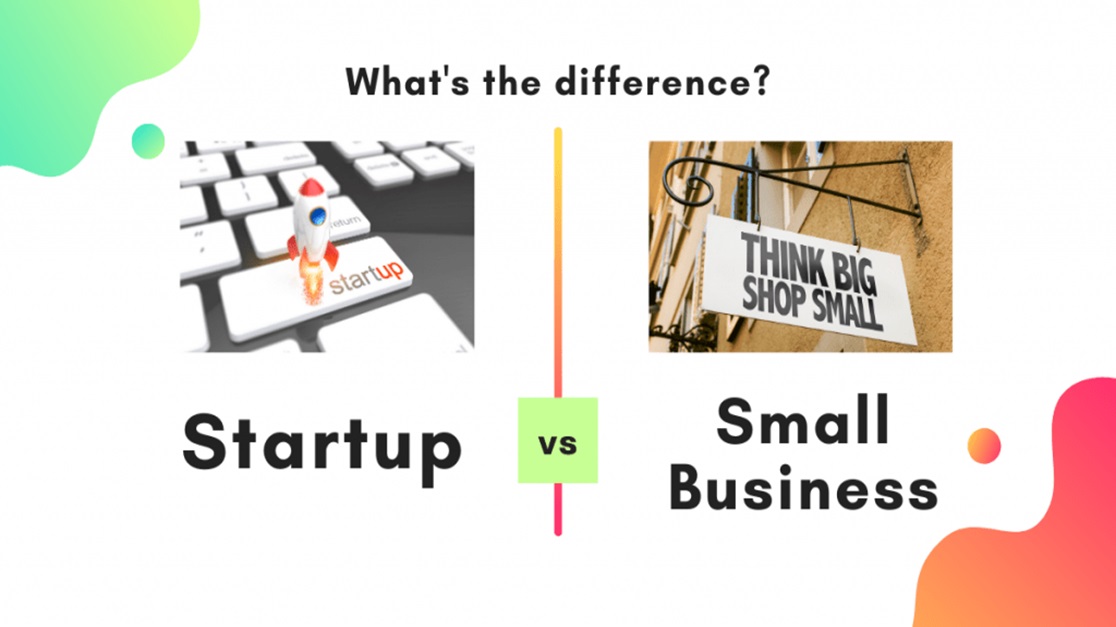Difference Between a Startup and an MSME: A Comprehensive Analysis
March 27, 2025

The entrepreneurial landscape is diverse, encompassing a range of business entities that vary in size, purpose, and goals. Two common terms often used interchangeably but fundamentally different are startups and Micro, Small, and Medium Enterprises (MSMEs). Understanding their distinctions is critical for entrepreneurs, investors, policymakers, and anyone interested in the business ecosystem.
In this article, we delve into the differences between startups and MSMEs, focusing on their definitions, growth trajectories, funding structures, challenges, and long-term objectives.
What is a Startup?
A startup is a newly established business venture aimed at solving a specific problem through innovative solutions. Startups are often technology-driven, focused on scalability, and operate in uncertain markets. Their goal is rapid growth and market disruption.
What is MSME?
Micro, Small, and Medium Enterprises (MSMEs) are businesses that maintain revenues, assets, or employee counts below a certain threshold defined by national policies. They typically operate in established industries and focus on steady, sustainable growth.
For instance, in India, MSMEs are classified based on their investment and turnover:
- Micro enterprises: Investment up to ₹1 crore and turnover up to ₹5 crore.
- Small enterprises: Investment up to ₹10 crore and turnover up to ₹50 crore.
- Medium enterprises: Investment up to ₹50 crore and turnover up to ₹250 crore.
Key Differences
1. Growth Orientation
- Startups: Focus on exponential growth by leveraging technology, innovation, and disruptive business models. For instance, companies like Flipkart and Ola started as startups and scaled rapidly by addressing unmet market demands.
- MSMEs: Prioritize steady and sustainable growth. An MSME may cater to a specific local or regional market with consistent demand, such as a textile manufacturing unit or a retail business.
2. Funding and Investment
- Startups: Rely heavily on external funding, such as venture capital, angel investments, or crowdfunding. In 2023 alone, Indian startups raised over $25 billion despite a challenging funding environment.
- MSMEs: Depend more on traditional financing methods like bank loans, government schemes, or internal accruals. Initiatives like the Credit Guarantee Fund Trust for Micro and Small Enterprises (CGTMSE) have been instrumental in providing collateral-free loans to MSMEs in India.
3. Risk and Uncertainty
- Startups: Operate in highly uncertain environments with high risks and high rewards. The failure rate for startups globally is approximately 90% within the first five years.
- MSMEs: Face relatively lower risk due to their focus on established markets and incremental growth.
4. Employment Contribution
- Startups: Contribute significantly to job creation but may not match MSMEs in sheer numbers due to their initial small team size. However, they often create highly skilled jobs.
- MSMEs: Are the backbone of employment in most economies. In India, MSMEs contribute to over 45% of the industrial output and employ around 110 million people.
6. Technology Adoption
- Startups: Leverage cutting-edge technologies like Artificial Intelligence (AI), Blockchain, or IoT to innovate.
- MSMEs: May adopt technology, but the focus is more on practicality and cost-effectiveness.
7. Market Reach
- Startups: Aim for global markets. Companies like Freshworks and Byju’s have achieved international recognition.
- MSMEs: Typically cater to local or regional markets, with some medium enterprises venturing into exports.
Challenges Faced by Startups and MSMEs
Startups:
- Securing funding in competitive environments.
- High burn rates.
- Navigating market uncertainties and customer acquisition.
MSMEs:
- Limited access to capital.
- Challenges in scaling due to resource constraints.
- Regulatory and compliance hurdles.
Policy Support
Governments worldwide recognize the importance of both startups and MSMEs in economic growth:
- For Startups: Initiatives like Startup India provide tax exemptions, funding support, and mentorship.
- For MSMEs: Programs like the Micro Units Development and Refinance Agency (MUDRA) scheme and subsidies under MSME policies are crucial.
Final Thoughts
While startups and MSMEs both contribute significantly to economic development, their roles, structures, and growth trajectories differ substantially. Startups are innovation-driven entities aiming for exponential growth and market disruption, whereas MSMEs focus on sustainable development within established industries. Both forms of business are vital, complementing each other to create a balanced entrepreneurial ecosystem.
Take your business to the next level with Ujjivan Small Finance Bank MSME Loans. We have a host of MSME products tailored for your unique business growth needs. Additionally, we offer MSME Overdraft facilities for urgent business capital requirement. Browse through our suite of products and apply today!
Disclaimer:
The contents herein are only for informational purposes and generic in nature. The content does not amount to an offer, invitation or solicitation of any kind to buy or sell, and are not intended to create any legal rights or obligations. This information is subject to updation, completion, amendment and verification without notice. The contents herein are also subject to other product-specific terms and conditions, as well as any applicable third-party terms and conditions, for which Ujjivan Small Finance Bank assumes no responsibility or liability.
Nothing contained herein is intended to constitute financial, investment, legal, tax, or any other professional advice or opinion. Please obtain professional advice before making investment or any other decisions. Any investment decisions that may be made by the you shall be at your own sole discretion, independent analysis and evaluation of the risks involved. The use of any information set out in this document is entirely at the user’s own risk. Ujjivan Small Finance Bank Limited makes no representation or warranty, express or implied, as to the accuracy and completeness for any information herein. The Bank disclaims any and all liability for any loss or damage (direct, indirect, consequential, or otherwise) incurred by you due to use of or due to investment, product application decisions made by you on the basis of the contents herein. While the information is prepared in good faith from sources deemed reliable (including public sources), the Bank disclaims any liability with respect to accuracy of information or any error or omission or any loss or damage incurred by anyone in reliance on the contents herein, in any manner whatsoever.
To know more about Ujjivan Small Finance Bank Products Visit:"https://www.ujjivansfb.in"
All intellectual property rights, including copyrights, trademarks, and other proprietary rights, pertaining to the content and materials displayed herein, belong
to Ujjivan Small Finance Bank Limited or its licensors. Unauthorised use or misuse of any intellectual property, or other content displayed herein is strictly prohibited and the same is not intended for distribution to, or use by, any person in any jurisdiction where such distribution or use would (by reason of that person’s nationality, residence or otherwise) be contrary to law or registration or would subject Ujjivan Small Finance Bank Limited or its affiliates to any licensing or registration requirements.
FAQs
1. What is the primary difference between a startup and an MSME?
The primary difference lies in their growth orientation and purpose. Startups focus on rapid growth and innovation to disrupt markets, while MSMEs aim for steady and sustainable growth within established industries.
2. How is funding different for startups and MSMEs?
Startups often rely on external funding sources like venture capital and angel investors, while MSMEs typically secure financing through bank loans, government schemes, and internal revenues.
3. Are startups always technology-driven?
Not always, but the majority of startups leverage technology to scale quickly and innovate. For instance, startups in sectors like e-commerce, fintech, and edtech heavily rely on technology.
4. What are the employment contributions of startups and MSMEs?
Startups create highly skilled jobs, often in emerging fields, but MSMEs employ a larger number of people, contributing to mass employment and industrial output.
5. Which sector benefits more from government policies: Startups or MSMEs?
Both sectors benefit from tailored government policies. Startups gain from initiatives like Startup India, while MSMEs receive support through schemes like MUDRA and CGTMSE.
6. Can an MSME become a startup?
While MSMEs and startups are fundamentally different, an MSME can adopt innovative practices to transition into a startup-like entity, focusing on scalability and market disruption.
7. Do startups or MSMEs have a higher success rate?
MSMEs generally have a higher success rate due to their focus on established markets and incremental growth, whereas startups face a higher risk of failure.
8. What are examples of startups and MSMEs in India?
Startups: Swiggy, Zerodha, and PolicyBazaar. MSMEs: Local textile manufacturers, handicraft exporters, and regional food processing units.
9. How do startups and MSMEs differ in terms of technology adoption?
Startups prioritize cutting-edge technologies to disrupt markets, while MSMEs adopt technology primarily to enhance efficiency and reduce costs.
10. What is the future outlook for startups and MSMEs in India?
Both startups and MSMEs are poised for growth. Startups are driving innovation and attracting global investment, while MSMEs remain crucial for employment and local economic stability.
Latest Blogs

Dussehra 2025: How to Win Your Financial Battles with Smart Saving
Dussehra 2025 (also known as Vijayadashami) falls on Thursday, October 2, 2025.

eSIM Scam in India: I4C Warns Mobile Users About Rising Fraud – How to Stay Safe
The Indian Cybercrime Coordination Centre (I4C), a wing of the Ministry of Home Affairs, issued a strong warning to mobile users about the rapid increase in eSIM fraud in India.

How to Link PAN with Aadhaar: Step-by-Step Guide & Consequences of Not Linking
Linking your Permanent Account Number (PAN) with your Aadhaar is no longer just a best practice.

Annual Information Statement (AIS): A Complete Guide for Stress-Free ITR Filing
India’s tax season is in its final stretch.

ITR-1 (Sahaj) Restrictions: Income Sources Not Allowed & Filing Rules
With just a few days left before the 15 September 2025 deadline for filing Income Tax Returns (ITRs) for Assessment Year (AY) 2025-26, many taxpayers are rushing to submit their forms online.





